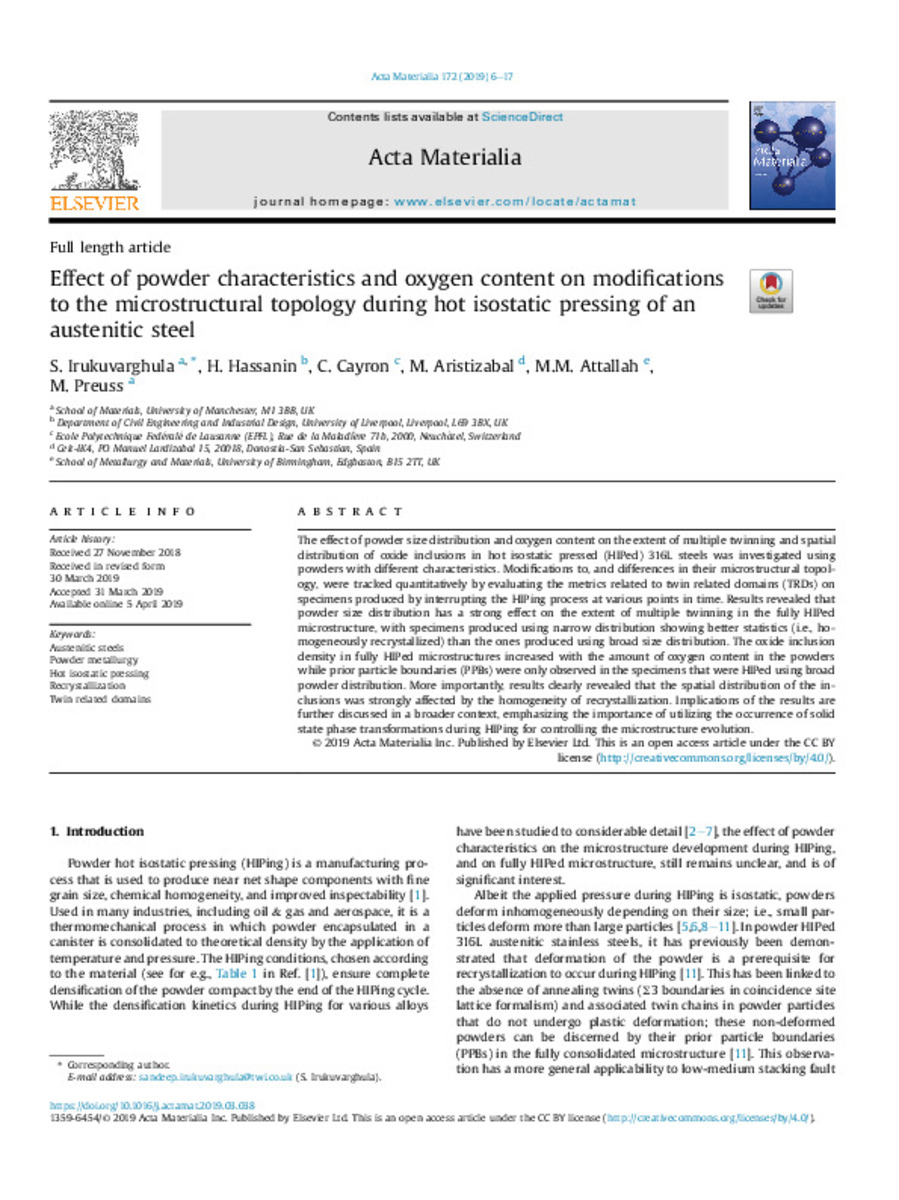Effect of powder characteristics and oxygen content on modifications to the microstructural topology during hot isostatic pressing of an austenitic steel
Keywords:
Austenitic steels
Powder metallurgy
Hot isostatic pressing
Recrystallization
Twin related domains
Note:
Published by Elsevier Ltd. This is an open access article under the CC BY license (http://creativecommons.org/licenses/by/4.0/)
Citation:
Irukuvarghula, S. (S.); Hassanin, H. (H.); Cayron, C. (C.); et al. "Effect of powder characteristics and oxygen content on modifications to the microstructural topology during hot isostatic pressing of an austenitic steel". Acta Materialia. 172 (2019), 2019, 6 - 17
Statistics and impact
0 citas en

0 citas en

Items in Dadun are protected by copyright, with all rights reserved, unless otherwise indicated.







